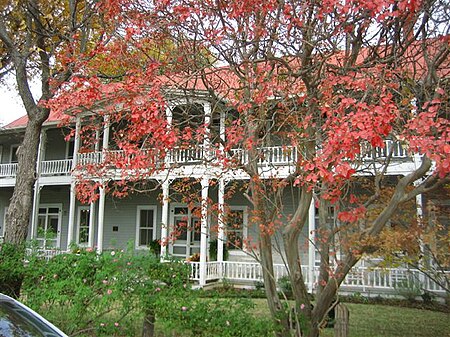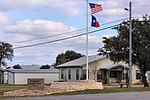Antlers Hotel (Kingsland, Texas)

The Antlers Hotel is a hotel and resort built in 1901 by the Austin and Northwestern Railroad on the Colorado River in Kingsland in Llano County in Central Texas. After a brief heyday, The Antlers closed in 1923 and fell into disrepair. It was eventually resurrected by a couple from Austin and reopened in 1996. It was listed on the National Register of Historic Places in 1997 as part of the Austin and Northwestern Railroad Historic District-Fairland to Llano historic district. The Victorian structure is the centerpiece of what has become an historic railway district. Other railroad buildings have been added, among them a depot and three brightly painted cabooses setting on actual rails which have also been modified to serve as guest accommodations. The transformation continues whenever additional authentic old railroad structures are occasionally found, renovated and added to the resort. In 2002, The Antlers was designated a Recorded Texas Historic Landmark, Marker No. 15150.
Excerpt from the Wikipedia article Antlers Hotel (Kingsland, Texas) (License: CC BY-SA 3.0, Authors, Images).Antlers Hotel (Kingsland, Texas)
King Court,
Geographical coordinates (GPS) Address Website Nearby Places Show on map
Geographical coordinates (GPS)
| Latitude | Longitude |
|---|---|
| N 30.660277777778 ° | E -98.436388888889 ° |
Address
Grand Central Cafe & Club Car Lounge
King Court 1010
78639
Texas, United States
Open on Google Maps










